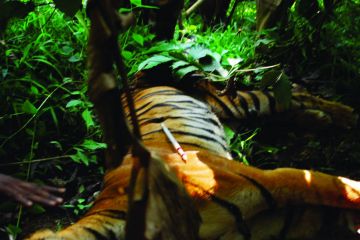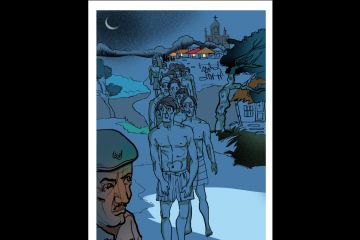
Ratniben Gopalbhai Bhabhor navigates her way with practised
precision around a steel trunk, a set of grinding stones, and a pooja place.
Things, both valuable and junk, are strewn everywhere. Keys dangle from her
neck, catching the light coming in between the wall and the roof.
It’s dark inside even though the sun is up. Ratniben points
at the photo of her late husband, placed on a mud platform, raised a few inches
above the floor. Grabbing a cloth bag, she takes out a badge and





